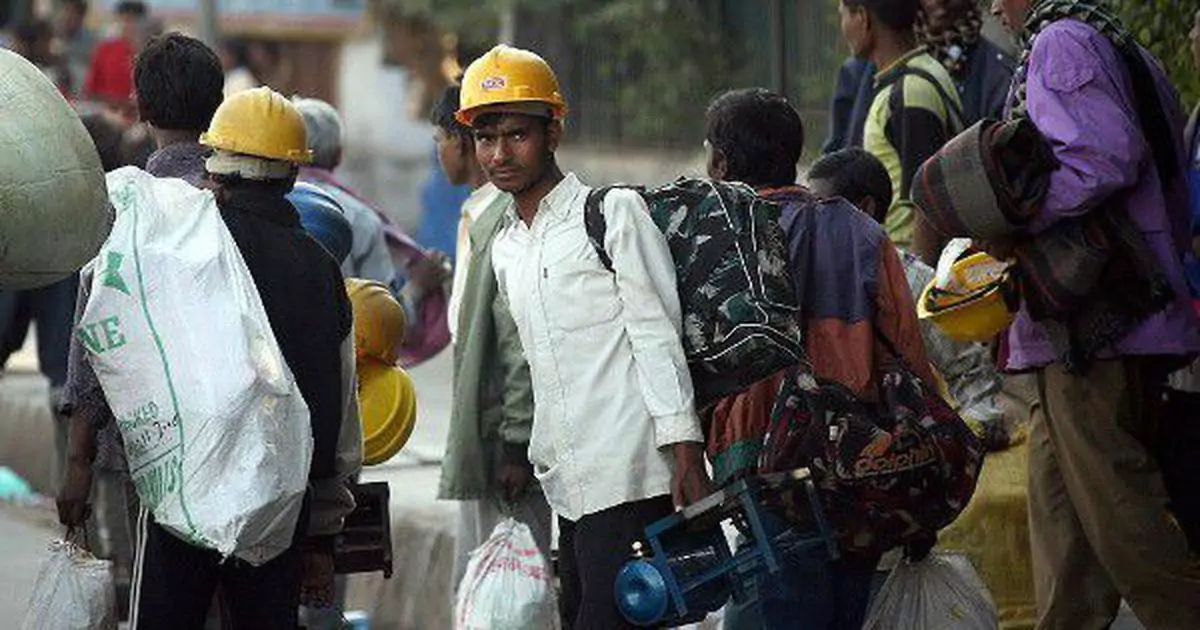Expansion of Informal Workforce, Lack of Social Security & India’s
Labour Market Reforms
The Changing Nature of India's Labour Market
India’s labour market is undergoing structural transformations
characterized by:
- Rising informal employment, with nearly 92% of workers
outside formal protections.
- The rapid expansion of gig and platform work, where over 1
crore Indians work as independent contractors for digital platforms
like Zomato, Swiggy, Uber, and Amazon.
- Labour reforms aimed at formalizing employment, through the
Code on Social Security (CoSS), 2020 and digital welfare
initiatives like e-Shram.
- Persisting challenges in social security coverage, with many
informal and gig workers lacking pensions, health benefits, and wage
protection.
Key Focus Areas of this Analysis:
- Expansion of Informal Workforce in India
- Social Security Deficits and Challenges for Workers
- India’s Labour Reforms: The Code on Social Security, 2020
- The Gig Economy: Policy Interventions & Social Security
Initiatives
- Critical Analysis: Strengths, Weaknesses & Implementation Gaps
- Future of Labour Policy & Recommendations for Reform
Expansion of Informal Workforce in India
Key Statistics on Informal Employment
| Indicator |
Data |
Source |
| Total Workforce in India |
520 million |
NSSO, PLFS (2023-24) |
| Informal Sector Employment |
92% of total workforce |
Ministry of Labour |
| Gig & Platform Workers (2025) |
1 crore |
NITI Aayog |
| Projected Gig Workers (2029-30) |
2.35 crore |
NITI Aayog |
| Women’s Labour Force Participation
(2025) |
41.7% |
Ministry of Labour |
Sector-Wise Distribution of Informal Workers
| Sector |
Workers Employed (in Millions) |
Nature of Informality |
| Agriculture & Allied Activities |
152 |
Daily wage labourers,
seasonal work, lack of contracts |
| Construction & Real Estate |
50 |
No safety provisions, no
wage security |
| Manufacturing & Textiles |
40 |
Contractual jobs, lack of
social benefits |
| Retail, Logistics, & E-commerce |
30 |
Gig workers, no fixed
salaries |
| Transport & Delivery Services |
25 |
Platform-based gig work, no
job stability |
Reasons for Informalization of Labour in India
- Regulatory Arbitrage: Employers prefer contractual hiring
over permanent employment to bypass EPF, ESIC, and other
benefits.
- Low Formal Job Creation: Despite GDP growth, job creation
in the formal sector remains stagnant.
- Rise of Digital Platforms: The gig economy (Zomato, Uber,
Swiggy, Amazon, Ola) promotes short-term contracts over
full-time employment.
- Labour Code Simplification: The labour code reforms reduced
worker protection in some sectors, allowing for more flexible hiring
but weaker social security enforcement.
Social Security Deficits & Challenges for Workers
Lack of Social Security: Core Issues
| Issue |
Impact on Workers |
| No Fixed Wages |
Gig workers earn fluctuating
incomes, sometimes below minimum wage. |
| No Pension or Provident Fund |
No long-term financial security
for informal workers. |
| No Health Insurance |
70% of informal workers lack
access to medical benefits. |
| Lack of Job Contracts |
Many workers are fired
arbitrarily without compensation. |
| Occupational Hazards |
Construction, gig delivery, and
factory workers face high accident risks. |

Gender Disparities in Informal Work
| Indicator |
Male Workers |
Female Workers |
| Informal Work Participation Rate |
78% |
92% |
| Average Monthly Wage (₹) |
₹12,000 |
₹7,500 |
| Access to Maternity Benefits |
12% |
3% |
Labour Market Reforms: The Code on Social Security, 2020
Key Features of the Code on Social Security (CoSS), 2020
| Provision |
Impact |
| Legal Recognition for Gig & Platform
Workers |
First-time formalization of gig economy
workers. |
| Aggregator Contribution to Social
Security |
Platforms like Zomato, Swiggy, Ola, Uber must
contribute
1-2% of annual revenue for worker benefits.
|
| Universalization of ESIC & EPFO |
Extends health insurance and pension
schemes to gig workers. |
| E-Shram Portal Integration |
30 crore+ informal workers registered for
social security benefits. |
| Mandatory Maternity & Health
Benefits |
Gig workers now eligible for PM Jan Arogya Yojana &
PM Shram Yogi Mandhan.
|
Implementation Challenges of CoSS, 2020
| Challenge |
Explanation |
| Lack of State-Level Enforcement |
Labour is a Concurrent List subject, requiring
state cooperation for full implementation.
|
| No Clarity on Gig Worker Rights |
Many gig workers are still classified as independent
contractors,
limiting their legal protections.
|
| Low Awareness Among Workers |
Many informal workers don't know about their
entitlements under CoSS.
|
| Weak Regulatory Oversight |
No strict penalties for companies failing to comply with social
security provisions.
|
The Gig Economy: Policy Interventions & Social Security
Initiatives
Government Welfare Schemes for Gig & Informal Workers
| Scheme |
Coverage & Benefits |
| e-Shram Portal |
Digital registration of 30 crore+ informal
workers for social benefits.
|
| Pradhan Mantri Shram Yogi Maan-Dhan
(PM-SYM) |
Pension scheme for informal workers (₹3,000/month
post-retirement).
|
| Employment Linked Incentive (ELI) Scheme
|
₹20,000 crore budget to create formal jobs in the gig
sector.
|
Pilot Programs for Gig Worker Welfare
- Aggregator Modules on e-Shram: Zomato, Urban Company, Blinkit
onboarded for worker social security.
- Expansion of ESIC & EPFO: Gig workers now included in
health & pension schemes.
Critical Analysis: Strengths, Weaknesses & Implementation
Gaps
Strengths of Labour Reforms
- Formal Recognition of Gig Workers
- Expansion of Social Security (ESIC, EPFO)
- Aggregator Responsibility for Worker Benefits
- Government Commitment to Digital Inclusion (e-Shram)
Key Weaknesses
- No Clear Employee Status for Gig Workers
- Weak State-Level Implementation
- Lack of Awareness Among Workers
- No Strict Penalties for Non-Compliance
Future of Labour Policy & Recommendations for Reform
Policy Recommendations
| Issue |
Reform Suggestion |
| Social Security Expansion
|
Universalize healthcare & pension benefits
for all workers.
|
| Stronger Regulatory
Framework |
Introduce penalties for non-compliance by gig
platforms.
|
| State Government
Coordination |
Faster adoption of labour codes at the state
level.
|
| Gig Worker Unions & Collective
Bargaining |
Allow gig workers to negotiate wages &
benefits.
|
The Future of India's Labour Market
- 50% of India’s workforce will be gig/informal by 2030.
- Stronger legal protections & social security will be essential
for sustainable job growth.
- The next decade will determine if India achieves full labour
formalization.
India's labour market is transforming rapidly, but worker
protections lag behind economic growth. While labour reforms &
digital inclusion are promising steps, implementation challenges
& policy gaps must be addressed for a fair and secure workforce.
India must build a robust social security net to ensure fair work conditions in
the era of gig and informal employment.














